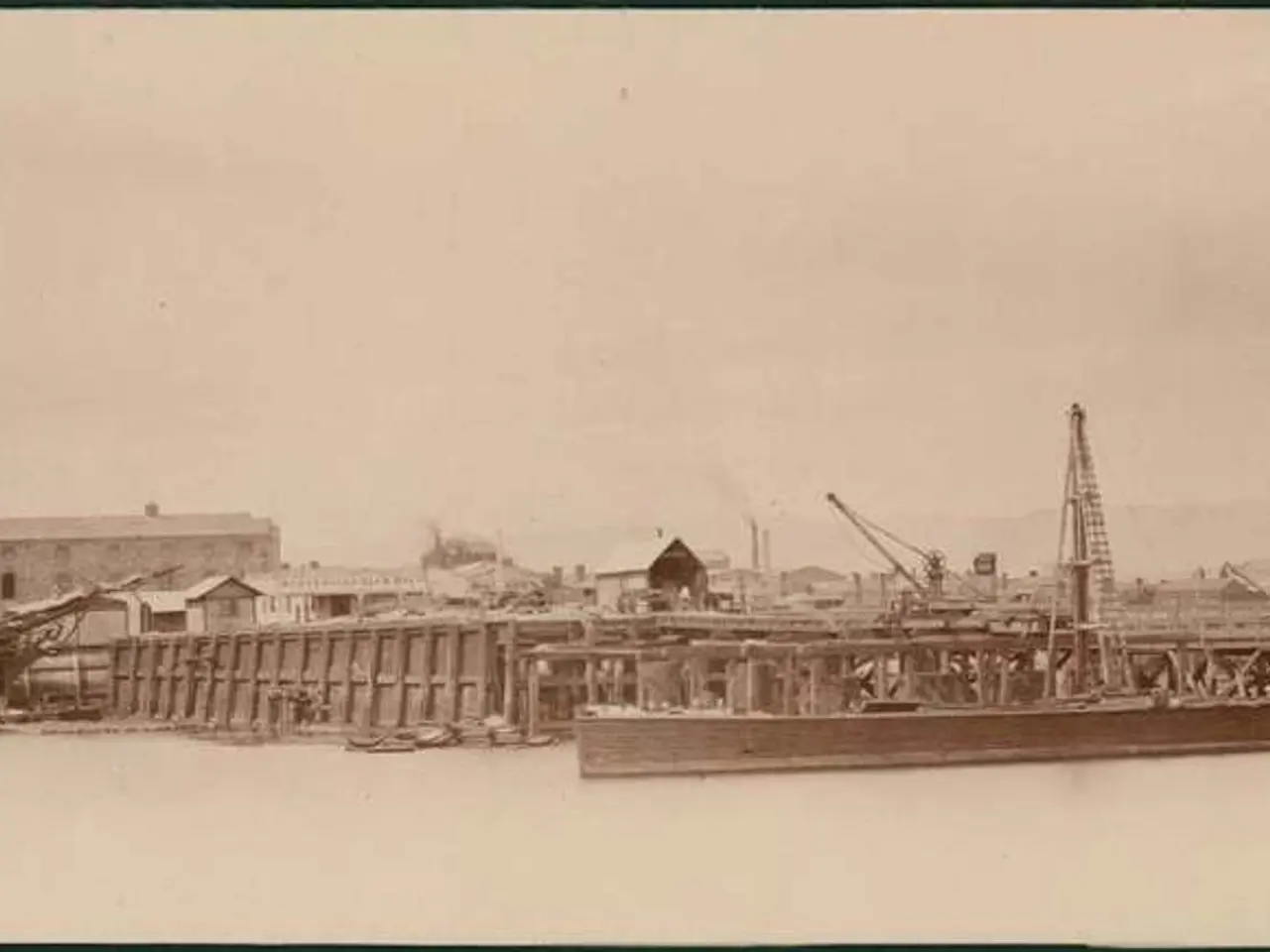Morocco experiments with solar panels that float on water, aiming to conserve resources and create electricity.
Morocco is taking a significant step towards renewable energy and water conservation with the implementation of a pioneering project at the Tanger Med port complex. The project, which aims to power the port complex with generated energy, could set a precedent for wider implications across North Africa.
The country has been grappling with declining rainfall, higher temperatures, and increased evaporation, resulting in water shortages. Official data shows that water reserves fed by rainfall have fallen by nearly 75% in the past decade compared with the 1980s, dropping from an annual average of 18 billion cubic metres to only five. This water crisis has led Morocco to mainly rely on desalination to combat water shortages, producing about 320 million cubic metres of potable water a year.
To mitigate the problem of evaporation, thousands of "floatovoltaic" panels have been installed in Tangier, Morocco. These panels generate electricity while protecting the water's surface from the sun. The water ministry considers the floating panels an "important gain" in the context of increasingly scarce water resources.
The Tangier reservoir loses around 3,000 cubic metres a day to evaporation, but this figure doubles during hot summer months. By using these floating solar panels, evaporation can be cut by about 30%. Between October 2022 and September 2023, Morocco's water reserves lost the equivalent of over 600 Olympic-sized swimming pools daily due to evaporation.
Climate science professor Mohammed-Said Karrouk called the project "pioneering", but noted that the reservoir's size and irregular surface could potentially damage the floating panels with fluctuating water levels. To address this issue, authorities plan to plant trees along the banks of the reservoir to reduce winds, believed to exacerbate evaporation.
The planned photovoltaic project at the Tangier reservoir covers exactly 10 hectares with 22,000 solar modules, aiming for a capacity of 13 megawatts to supply the nearby Tanger Med port complex. Once completed, the system would generate roughly 13 MW of electricity, enough to power the Tanger Med complex.
Authorities also aim to expand desalination production to 1.7 billion cubic metres yearly by 2030. In addition, Morocco already has a system called the "water highway" - a 67km canal linking the Sebou basin to the capital Rabat - with plans to expand the network to other dams.
Assessment studies are underway for two more similar projects in Oued El Makhazine and Lalla Takerkoust, Morocco. Similar technology is being tested in France, Indonesia, and Thailand, while China already operates some of the world's largest floating solar farms.
Karrouk suggested an urgent priority should be transferring surplus water from northern dams to regions in central and southern Morocco that are more impacted by the years-long drought. The government plans to reach 22,000 panels, covering about 10 hectares at the Tangier reservoir, marking a significant step towards a sustainable future for Morocco.
Read also:
- Peptide YY (PYY): Exploring its Role in Appetite Suppression, Intestinal Health, and Cognitive Links
- Toddler Health: Rotavirus Signs, Origins, and Potential Complications
- Digestive issues and heart discomfort: Root causes and associated health conditions
- House Infernos: Deadly Hazards Surpassing the Flames





